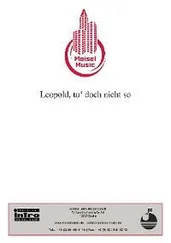In 1968, I forwarded a copy of my translation to Fr. Pedro Arrupe, SJ, (the twenty-eighth and current) Superior General of the Society of Jesus in Rome to enquire as to why it had not been included among the official records of the Jesuit missions to New France.
On February 12th, I received a brief, very courteous reply (see later notes, attached) from the Superior General’s secretary thanking me for my letter, assuring me that the Reverend Father had enjoyed reading the document I sent him and thanking me for my “assiduous scholarship” and my
“interest in the glorious history of the Jesuit martyrs” but asserting that, owing to both its “fantastical and lurid” subject matter as well as its length, the document was clearly a forgery, though it had already been examined on both palaeographic and material grounds by Professor Kleinschmit, and found to be consistent, even if the subject matter itself was not. It’s not surprising to me that the SG would find this embarrassing if fictional; and mortifying if it was proven to be an authentic record of the delusions of a Jesuit missionary likely driven mad by the isolation of northern Ontario in the seventeenth century. The Jesuit motto, “Ad Majorem Dei Gloriam”-to the greater glory of God-is repeated several times in this narrative, which struck me as unusual, since one can infer that both the writer and the recipient were already well familiar with its meaning. There is an earnestness to its use here that seems noteworthy, especially in context of the narrative, as becomes obvious.
NB: Must forward a copy to Billy. He will find this entertaining, esp. in light of our “adventures” with good Dick Weal that summer!
– P. K. O., Ph. D. 09/12/71
Being the Last True Testament and Relation of Father Alphonse Nyon
Given at Montréal, Québec in a the form of a Letter to the Very Reverend Father Vincenzo Caraffa, Superior General of the Society of Jesus, at Rome
Anno Domini 1650
Very Reverend Father in Christ,
Pax Christi
I send this last Relation in the hopes that it will reach Your Reverence by the ship returning to France before the ice in this bitter region renders entirely compromised the passage of our vessels across the ocean.
I fear that my time here in this land is short, as the pox that has plagued hundreds of the Savages, thankfully a goodly number of them baptized and brought to our Christian Faith and now resting in the arms of Our Lord Jesus Christ in Heaven, has taken me into its embrace as well.
I write with difficulty and have entrusted the care and delivery of this Relation to Your Reverence into the hands of my friend Father Charles Vimont. He has sworn to seal this document and not to cast his eyes upon its contents, which are for the eyes of Your Reverence alone, on the peril of his Immortal Soul.
For my part, my vain prayers that I should again see the shores of my homeland or the beautiful cathedral of Notre-Dame de Chartres where I first heard Our Lord’s call as a young man, or indeed once again touch the face of my beloved mother, have been denied by Our Lord, and I submit myself joyfully to His will.
My one true regret during these many years of service to the Savages of New France is that I should have been spared the great honour of martyrdom, the great blessing enjoined upon so many of our fallen Fathers at the bloody hands of the Hiroquois-most lately Father de Brébeuf, Father Chabanel, and Father de Lalande, who died so horribly at Sainte-Marie among the Hurons last year, praising the name of Christ and giving absolution to their Barbarian tormentors with their last breath, even after their tongues were cut out, for they kept preaching till death released them.
I pray for Your Reverence’s understanding, prayers, and meditation upon the reading of this, my last Relation and Testament, for it is with a heavy heart that I set down the strange and terrible events I witnessed at St. Barthélemy among the Ojibwa in the northern Lac Superiéur region of the country in the winter of the Year of Our Lord 1632.
These secrets I have kept to myself for nearly twenty years, confiding them not even in the Sacrament of Confession, though I regularly opened my heart to God and begged His forgiveness, not only for the blasphemies I have seen, but also for those I have wrought myself in my sad and pitiable effort to do His will as best as could be done by one so unworthy.
In the autumn of that dark year of which I write, word was received by Monsieur de Champlain at Trois-Rivières of the destruction of two of our settlements near Sault de Gaston, in Huronia, and the martyrdom of three of our Jesuit Fathers in what could only have been an attack by the Hiroquois, for their fiendish handiwork leaves a spoor as unmistakable as the handiwork of Satan himself.
In the first, the Mission of Sainte-Berthe, the martyrs were, by name, Father Renaud d’Olivier, Father Mathieu Glazier, and Father Nausson d’Uongue. The Fathers had travelled from France together and, it was reported, had been as close as brothers. I pray they found comfort in their brotherhood at the end. The Indian trappers reported the hideous sight of the maimed and tortured bodies of d’Olivier, Glazier, and d’Uongue. Their scorched bodies still hung from the stakes to which they were tied and left for carrion. The Savages, it was reported, had poured boiling water over their heads in mockery of Baptism and cut out their eyes and tongues, placing live coals in the sockets.
Likewise, they reported the smoke still heavy and foul over the burned village, and many dead, including a number of baptized Savages. We wept at this news, even though we knew that our fallen Brothers had attained the heights of Heaven, having died in the greatest possible service to Our Lord Jesus Christ. Never have the words of our Jesuit motto, Ad majorem Dei gloriam, comforted me more than they did in the hours that followed the news of the Fathers’ martyrdom.
In the second instance, the strange news was of the mission of St. Barthélemy deep in the Ojibwa region of that country, a region noted for the cruelty of the terrain itself and of the strangeness of its customs, superstitions and legends. So tight, it is said, is the Devil’s hold upon these poor people that establishing a mission in this particular region had long been an ambition of the Crown in its support of our work here in New France.
In the case of the mission of St. Barthélemy, the trappers related that the mission seemed entirely abandoned.
Unlike the mission of Sainte-Berthe, which had clearly fallen to an attack by the Hiroquois, the mission at St. Barthélemy appeared deserted, as though the inhabitants, both Christian and Savage, had all departed freely and of their own volition.
The trappers observed this and more and related it to Monsieur de Champlain, who in turn related it to Father de Varennes, who was then the representative responsible for dispatching our Fathers on their missions upriver in the company of their Huron guides.
It was at this point that I was summoned to meet with Father de Varennes at Trois-Rivières. I was then still a very young man, all of twentyone, a year in New France since my departure from Chartres, and foolish in the fearless way of all young men, but determined to serve the will of God with all of my body and soul. I knew even then that martyrdom for the greater glory of God would be the highest attainment, and yet my poor flesh dreaded it, dreaded the agony of the flames of the stake as it dreaded the butchery of blade and spear. I confess that fear with shame, but with the openhearted humility that my own unworthiness demands.
Father de Varennes wasted no time in asking me what I knew of the settlement of St. Barthélemy. Sadly, I told him, I had only heard of it in passing through the stories of the other young priests. I knew little of the region or of the mission itself.
Читать дальше












